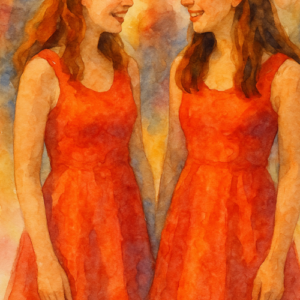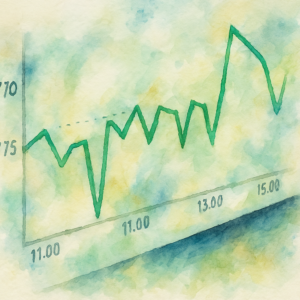What does “voire” mean? And what do the phrases “la plupart”, “ne le sont”, and “parfois” mean in context? Hear them all in today’s clip from the Passerelles podcast. How is your French comprehension going? Don’t miss today’s quiz.
Take the quiz, join the conversation.
Did you find this one challenging or easy? Did you hear something diffferent? What surprised you? What levels did you complete? Comment below and share what’s opening up for you with this quiz.
This clip is from Passerelles Episode 1. Listen and fill in what you hear below. Read more and find a translation below. Listen to the full episode here.
This audio sample and transcription is from Passerelles ep. 1. We do not own the content. Listen to the entire episode
even
What’s opening up for you with this clip?
The snippet in English
Find a translation of this snippet here, how much of this did you hear?
Elle montre qu’après l’âge de trente ans, la plupart des adultes se voient comme étant plus jeunes qu’ils ne le sont. Ça peut parfois aller jusqu’à dix, quinze, vingt, voire vingt-cinq ans de moins que leur âge. Dans la phrase précédente, quand je dis « voire vingt-cinq ans », c’est pas le verbe « voir ».
It shows that after the age of thirty, most adults see themselves as younger than they actually are. This can sometimes be as much as ten, fifteen, twenty or even twenty-five years younger than their own age. In the previous sentence, when I say “even twenty-five years”, it’s not the verb “to see”.
The above translation from Deepl. Source
What does “la plupart” mean?
“La plupart” is a French expression that translates to “most” or “the majority” in English. It’s used to indicate that a significant portion of a group or a collection falls into a certain category or exhibits a particular characteristic. Here are some key points about its usage:
“La plupart” is used to highlight the larger portion or the prevailing characteristic within a group. It helps provide information about the distribution or prevalence of a certain quality among a set of items or individuals.
In terms of grammar, “la plupart” is followed by a plural noun, even if the noun it refers to is singular. This is because “plupart” itself is singular, but it implies a group of things, hence the plural agreement.
“La plupart” usually comes before the noun it refers to, indicating that the noun represents the majority or prevailing feature within a larger context.
- “La plupart des étudiants aiment la musique.” (Most students like music.)
- “La plupart des jours sont ensoleillés en été.” (Most days are sunny in summer.)
“La plupart” is often used with quantifying expressions to provide more specific information about the proportion or percentage being referred to.
- “La plupart des gens” (Most people)
- “La plupart du temps” (Most of the time)
- “La plupart des enfants” (Most children)
Similar Expressions: Depending on the context, you might also encounter phrases like “beaucoup de” (many), “une majorité de” (a majority of), and “plusieurs” (several) to convey similar ideas.
- “La plupart des étudiants sont enthousiastes à l’idée de partir en voyage.” (Most students are enthusiastic about the idea of going on a trip.)
- “La plupart des fleurs dans ce jardin sont roses.” (Most flowers in this garden are pink.)
- “La plupart du temps, il préfère lire plutôt que regarder la télévision.” (Most of the time, he prefers reading over watching television.)
Understanding the use of “la plupart” is important for expressing general trends, characteristics, or preferences within a group. It’s commonly used in both spoken and written French to provide insight into the distribution of qualities or attributes among a collection of items or individuals.
What does “ne le sont” mean?
In the example “la plupart des adultes se voient comme étant plus jeunes qu’ils ne le sont,” the phrase “ne le sont” is used in a comparative construction to convey a comparison between how adults perceive themselves and their actual age. Let’s break it down:
- “La plupart des adultes se voient comme étant plus jeunes”: This part of the sentence means “most adults see themselves as being younger.” It establishes the idea that adults perceive themselves as younger than they actually are.
- “qu’ils ne le sont”: This part of the sentence adds a comparative element to the statement. “Ne le sont” is a shortened form of “ne le sont en réalité,” which means “are not in reality.” Here, it’s used to indicate that their perception of being younger is not the reality.
Why is it written like that?
In French, comparative constructions often use “ne… que” or “ne… pas” to create a negation or contrast between the perception and reality. In this case, “ne le sont” serves as a negation of the perceived age, emphasizing that the perception doesn’t match the reality. The “le” here refers to the “plus jeunes” (younger) mentioned earlier in the sentence.
The use of “ne… le sont” provides a clear and concise way to express the contrast between the perceived and actual states. This construction is commonly used in French to create such comparative relationships.
Translation:
The example sentence “la plupart des adultes se voient comme étant plus jeunes qu’ils ne le sont” can be translated to “most adults see themselves as being younger than they actually are.” It’s a way to discuss the discrepancy between self-perception and reality when it comes to age.
What does “parfois” mean?
“Parfois” is a French adverb that translates to “sometimes” in English. It’s used to indicate that an action or event occurs occasionally or at certain times, but not always. Here are some key points about its usage:
“Parfois” is used to express irregular or occasional frequency. It signifies that an action, event, or situation happens from time to time but is not a regular occurrence.
“Parfois” is commonly placed at the beginning or in the middle of a sentence, followed by a verb or a verb phrase. It can also be placed at the end of a sentence for emphasis.
- “Parfois, je vais au cinéma le weekend.” (Sometimes, I go to the movies on weekends.)
- “Je mange des desserts parfois.” (I eat desserts sometimes.)
In more informal speech, you might come across variations of “parfois,” such as “quelquefois” or “des fois.” These variations all convey the same idea of occasional occurrence. Additionally, “par moments” can also be used to express a similar concept.
“Parfois” should not be confused with “souvent” (often) or “toujours” (always), which indicate higher frequencies. Similarly, “jamais” (never) is the opposite of “parfois.”
Using “parfois” allows you to convey a balanced perspective on the frequency of events or actions. It helps provide a realistic portrayal of how often something occurs, whether it’s related to daily routines, activities, or personal experiences. Incorporating such adverbs into your speech adds nuance and accuracy to your communication, allowing you to effectively describe the variability of occurrences in your life or discussions.
What does “voire” mean?
“Voire” is a French adverb that can be translated as “even” or “indeed” in English. It is used to emphasize a statement by introducing an additional element that strengthens or confirms what has been said. Here are some key points about its usage:
“Voire” is used to emphasize a statement, often highlighting a more extreme or unexpected element than what was previously mentioned.
- “Cet endroit est magnifique, voire enchanteur.” (This place is beautiful, even enchanting.)
- “Le film était divertissant, voire captivant.” (The movie was entertaining, even captivating.)
Similarity to “Même”: “Voire” is similar in meaning to “même” when used to add emphasis. However, “voire” often conveys a stronger sense of surprise or contrast.
“Voire” is typically placed before the element it emphasizes, and it’s often followed by adjectives, adverbs, or descriptive phrases.
Depending on the context, “voire” can be synonymous with “même,” “aussi,” “également,” and “même que.” However, “voire” often adds a sense of surprise or intensity that these synonyms might not convey to the same extent.
- “Il est doué en mathématiques, voire surdoué.” (He’s talented in mathematics, even gifted.)
- “C’était une journée agréable, voire inoubliable.” (It was a pleasant day, even unforgettable.)
Using “voire” in your speech adds a layer of emphasis and nuance, allowing you to underscore a specific aspect or quality of what you’re discussing. It’s commonly used in both spoken and written French to express surprise, amazement, or to create a stronger impact on the listener or reader. As with many linguistic tools, mastering the appropriate use of “voire” contributes to effective communication by conveying shades of meaning and emotional resonance in your expressions.
What did you love about this?
Comment below with your feedback! Tells us what you think. Send a note or leave a comment below. We appreciate the feedback. Also, we’re always looking for partners to build this site and grow the content available.
What does “voire” mean? And what do the phrases “la plupart”, “ne le sont”, and “parfois” mean in context? Hear them all in today’s clip from the Passerelles podcast. How is your French comprehension going? Don’t miss today’s quiz.
Take the quiz, join the conversation.
Did you find this one challenging or easy? Did you hear something diffferent? What surprised you? What levels did you complete? Comment below and share what’s opening up for you with this quiz.








